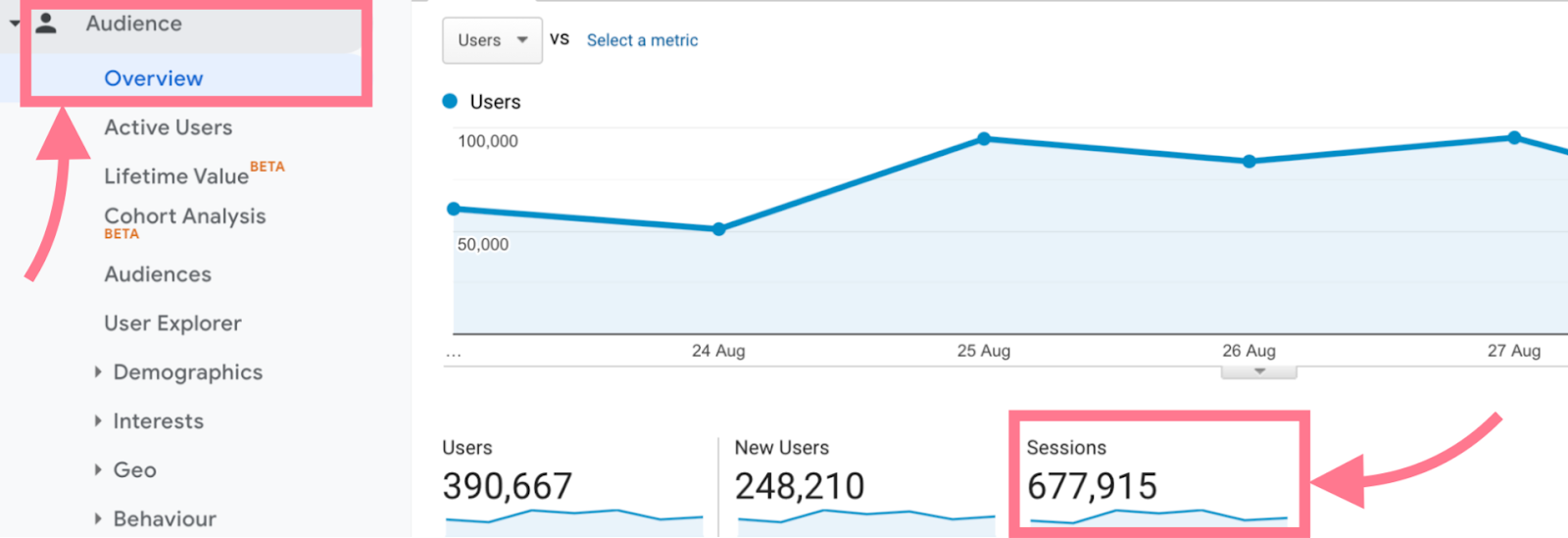When Does the Google Analytics Tracking Code Send an Event Hit to Analytics? A Deep Study Customer Communications
When Does the Google Analytics Tracking Code Send an Event Hit to Analytics? A Deep Study Customer Communications
Blog Article
Master Website Insights With Accurate Google Analytics Monitoring Code
The efficient application of Google Analytics pivots on the accurate implementation of its tracking code, an essential step typically forgotten by site owners. What are the common challenges that could undermine your tracking initiatives, and exactly how can you guarantee accuracy in your strategy?
Recognizing Google Analytics Fundamentals
Google Analytics is a crucial device for site owners and marketers, providing indispensable insights into customer habits and site efficiency. At its core, Google Analytics accumulates information concerning visitors to a site, allowing individuals to analyze metrics such as traffic resources, user involvement, and conversion rates. Understanding these fundamentals is crucial for maximizing a site's effectiveness and enhancing user experience.
The system uses cookies to track interactions, videotaping data such as web page sights, session durations, and bounce rates. This info is aggregated and provided with personalized dashboards, making it possible for individuals to envision fads with time. Secret performance signs (KPIs) can be monitored, such as the overall variety of customers, brand-new versus returning site visitors, and the geographical circulation of the target market.
Additionally, Google Analytics offers segmentation attributes, allowing customers to separate details traffic resources or individual demographics for even more targeted evaluation. By grasping these fundamental aspects, internet site proprietors can make educated decisions concerning web content technique, advertising projects, and overall site enhancements. Eventually, recognizing Google Analytics essentials is important for leveraging information to drive growth and achieve company objectives successfully.
Establishing Your Monitoring Code

Copy the given monitoring code and paste it into the HTML of your website. This ensures that the monitoring code tons before any other web content, enabling it to capture data precisely.
After installation, validate that the tracking code is functioning correctly by utilizing Google Tag Assistant or the Real-Time records in Google Analytics - when does the google analytics tracking code send an event hit to analytics?. This step is important to verify that your data collection is energetic and precise, establishing the foundation for informative analysis
Usual Tracking Code Issues
Lots of site proprietors come across common issues with their Google Analytics tracking code that can prevent data collection and evaluation. One prevalent problem is incorrect installment. This may happen when the tracking code is positioned in the wrong area of the website's HTML, typically leading to absent or insufficient information. In addition, having multiple instances of the monitoring code on a single web page can lead to filled with air metrics, as customer communications may be counted greater than when.
One more concern develops from using advertisement blockers, which can prevent the tracking code from implementing altogether, thus skewing data. when does the google analytics tracking code send an event hit to analytics?. Additionally, failing to set up filters correctly can lead to the exclusion of crucial traffic sources or the inclusion of undesirable referral spam, distorting the data collected
Web site proprietors might additionally ignore the relevance of tracking code updates, especially when moving to Google Analytics 4 (GA4) from Universal Analytics. Last but not least, not enough testing before releasing adjustments can lead to undiscovered errors in the tracking code, further making complex data reliability. Dealing with these usual check my blog issues is vital for making sure exact tracking and informative analytics.
Studying Internet Site Information Efficiently
Exact information collection is just the initial step in leveraging Google Analytics; the actual worth hinges on properly examining that data to drive enlightened decision-making. To achieve this, it is important to determine key efficiency signs (KPIs) that straighten with your business objectives. Focus on metrics such as conversion prices, customer involvement, and web traffic sources, as these will certainly give understandings into customer habits and the total effectiveness of your website.
Making Use Of Google Analytics' segmentation features permits a much deeper understanding of your audience. By damaging down information into specific demographics, a knockout post habits, and traffic networks, you can discover trends and patterns that educate targeted methods. Implementing custom reports and control panels can streamline this process, enabling fast accessibility to important information.
Moreover, frequently assessing data patterns over time assists to recognize anomalies and opportunities for improvement. Use visualization devices to present data in a conveniently digestible style, facilitating extra effective communication with stakeholders. Inevitably, the capacity to evaluate why not check here web site information effectively equips services to make critical choices that boost customer experience, optimize advertising and marketing initiatives, and drive development.

Ideal Practices for Accurate Monitoring
Applying efficient tracking techniques is vital for getting reputable data in Google Analytics. To make certain accurate tracking, start by correctly mounting the Google Analytics tracking code on every page of your web site. This can be achieved through a tag supervisor or by directly embedding the code right into the HTML.
Next, configure your Google Analytics account to omit inner traffic. This can be done by establishing filters that identify and get rid of sees from your organization's IP address, consequently preventing manipulated data. Furthermore, make use of event tracking to monitor details user interactions, such as downloads or video clip plays, which conventional page views may ignore.
Routinely examine your tracking configuration to verify that all attributes, such as goals and ecommerce monitoring, are working correctly. Establish a consistent identifying convention for your projects and occasions to assist in easier reporting and analysis.
Lastly, take into consideration leveraging UTM specifications for campaigns to get understandings right into the performance of various marketing efforts. By following these best methods, you can improve the accuracy of your data collection and evaluation, ultimately resulting in more informed decision-making for your website.
Conclusion
By making certain the monitoring code is properly put and routinely examined, site proprietors can record crucial user communication data, thus promoting the identification of vital performance indications. Eventually, a robust tracking structure enhances the capacity to drive interaction and boost overall web site performance.

Not enough testing prior to introducing modifications can result in unnoticed mistakes in the monitoring code, additionally complicating data reliability.Applying reliable monitoring practices is crucial for acquiring reliable information in Google Analytics. By making certain the tracking code is correctly positioned and consistently examined, website proprietors can capture vital customer interaction information, therefore promoting the identification of key efficiency signs.
Report this page